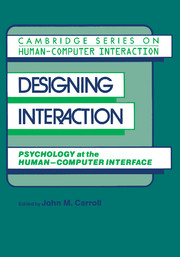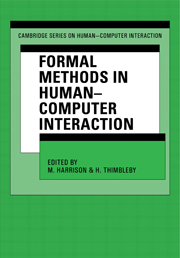Designing Interaction
Designing Interaction, first published in 1991, presents a broadbased and fundamental re-examination of human-computer interaction as a practical and scientific endeavor. The chapters in this well-integrated, tightly focused book are by psychologists and computer scientists in industry and academia, who examine the relationship between contemporary psychology and human-computer interaction. HCI seeks to produce user interfaces that facilitate and enrich human motivation, action and experience; but to do so deliberately it must also incorporate means of understanding user interfaces in human terms - the province of psychology. Conversely, the design and use of computing equipment provides psychologists with a diverse and challenging empirical field in which to assess their theories and methodologies.
Product details
October 1991Paperback
9780521409216
346 pages
252 × 179 × 18 mm
0.77kg
Available
Table of Contents
- Preface
- Contributors
- 1. Introduction: The Kittle House Manifesto John M. Carroll
- 2. Cognitive artifacts Donald A. Norman
- 3. Some remarks on the theory-practice gap Zenon W. Pylyshyn
- 4. Comparative task analysis: an alternative direction for human-computer interaction science Ruven Brooks
- 5. Let's get real: a position paper on the role of cognitive psychology in the design of humanly useful and usable systems Thomas K. Landauer
- 6. The task-artifact cycle John M. Carroll, Wendy A. Kellogg and Mary Beth Rosson
- 7. Bridging between basic theories and the artifacts of human-computer interaction Philip Barnard
- 8. Interface problems and interface resources Stephen J. Payne
- 9. Inner and outer theory in human-computer interaction Clayton Lewis
- 10. Local sciences: viewing the design of human-computer systems as cognitive science Andrea A. diSessa
- 11. The role of German work psychology in the design of artifacts Siegfried Greif
- 12. Beyond the interface: encountering artifacts in use Liam J. Bannon and Susanne Bødker
- 13. A development perspective on interface, design and theory Austin Henderson
- 14. Working with the design process: supporting effective and efficient design John Karat and John L. Bennett
- 15. Discussion: perspectives on methodology in HCI research and practice Linda Tetzlaff and Robert L. Mack
- Index.




